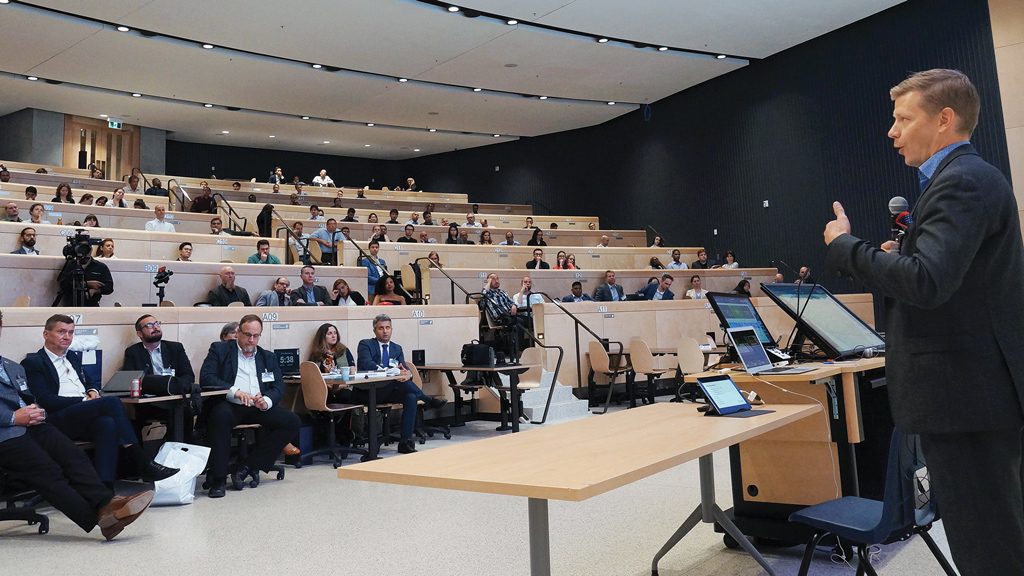Ontario municipalities looking to reduce building permit backlogs by hiring more staff might rethink that notion and follow the lead of cities like Vantaa, Finland, where a shift to an electronic permitting process has increased permit approvals by 30 per cent.
That city of about 250,000 residents neighboring Helsinki, started the automated code checking process in 2015 and hasn’t looked back, said Jarkko Turtiainen, managing director, Evolta North America, a Finland-based technology provider of the digital building permit process.
“When everything is online and you (architects, for example) can access it whenever you want…you don’t need to be contacting the city over phone or email,” Turtiainen told a seminar audience recently at the forth Annual Building Tall Conference in Toronto.
In Vantaa, e-permitting works in BIM and is geographic information system (GIS) enabled. Finland is probably the first country where BIM files are used to get permits, he said.
Turtiainen said e-permitting is not expensive because of the savings it offers. As an example, South Korea saved $1.6 billion (U.S.) through e-permitting from 2004-2016. By working with industry to standardize the permit process, the government reduced the permit approval period from 60 to 15 days.
He said while the Canadian building and design community is experienced with BIM, most municipalities are unfamiliar with the technology and few, if any, offer a standardized permit process that speeds up application time.
The handful of cities that have some form of e-permitting provide it in 2D, rather than BIM. The two technologies don’t wed well.
“Why do a nice design of 3D…that is reviewed in 2D…Why have that extra step?” Turtiainen told the seminar.
He said with many building officials are nearing retirement, municipalities could face a staffing crunch. By standardizing an e-permitting process across Ontario, cities could share resources, eliminating the need to hire additional staff.
For example, “Every city doesn’t have to have a structural engineer or special architects…,” Turtiainen explained.
E-permitting should be a collaborative effort between building, planning and public works departments and industry, he told the seminar.
He said that architects who use Evolta’s digital building permit technology have told him that it frees up a day a week for other work.
While e-permitting means less work for city permitting departments and more work for industry that additional time can be charged to project owners to meet quicker permit approval periods, he added. “Everyone will be happy, hopefully at the end of the day.”
He said municipalities need the support of industry to catch up on BIM applications.
Furthermore, new permit staff should have software experience (BIM, in particular) and city politicians must be open to its application. That hasn’t always been the case.
But shifting to electronic permits can’t happen overnight — especially in big cities like Toronto. Hong Kong has indicated plans to use BIM-only permitting but the process will take five to 10 years, he said.
Another country on board — Singapore — has invested more than $250 million on development but it will take time for the automated code checking system to be fully operation.
Richard Lyall, president, RESCON, sees the merit of a standardized e-permitting system in Ontario. “The key part of increasing transparency and streamlining building and development permit approvals is to link key municipal/provincial agencies together online,” he told the seminar. “This makes it much easier for builders and all parties concerned to track applications while increasing efficiency…”
In hearings prior to the passing of the province’s More Homes, More Choice Act on June 6, Steve Clark, minister of municipal affairs and housing, said the idea of moving to digitized building systems across Ontario was raised “over and over again.”
“We have to improve the (development) process,” Clark told the seminar audience. “We have to innovate…eliminate duplication and streamline requirements and e-permitting is one of those innovative approaches that our government has to look at.”










Recent Comments